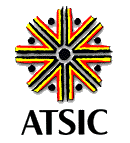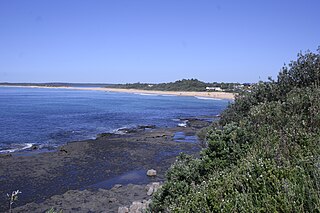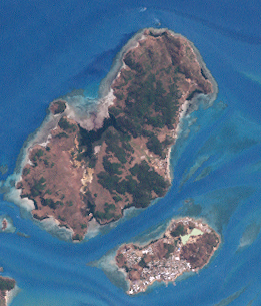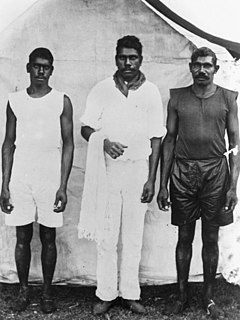| Walhallow New South Wales | |
|---|---|
| Coordinates | 31°23′00″S150°25′04″E / 31.38333°S 150.41778°E Coordinates: 31°23′00″S150°25′04″E / 31.38333°S 150.41778°E |
| Population | 179 (with Caroona; 2006) [1] |
| Postcode(s) | 2343 |
| Location | |
| LGA(s) | Gunnedah Shire Council |
| State electorate(s) | Tamworth |
| Federal Division(s) | Parkes |
Walhallow is a village in the North West Slopes region of New South Wales, Australia, near the Mooki River. The town is in the south east corner of Gunnedah Shire Council local government area, 370 kilometres (230 mi) north west of the state capital, Sydney and 34 kilometres (21 mi) west of the nearest sizeable town, Quirindi. At the 2006 census, the village with neighbouring Caroona had a population of 179. [1]
The North West Slopes region of New South Wales, Australia refers generally to the area west of the Northern Tablelands, to the north of the Central West region and to the east of the Far West region. The region corresponds generally to the Australian Bureau of Meteorology's forecast area of North West Slopes and Plains.

New South Wales is a state on the east coast of Australia. It borders Queensland to the north, Victoria to the south, and South Australia to the west. Its coast borders the Tasman Sea to the east. The Australian Capital Territory is an enclave within the state. New South Wales' state capital is Sydney, which is also Australia's most populous city. In September 2018, the population of New South Wales was over 8 million, making it Australia's most populous state. Just under two-thirds of the state's population, 5.1 million, live in the Greater Sydney area. Inhabitants of New South Wales are referred to as New South Welshmen.

Mooki River, a perennial stream that is part of the Namoi catchment within the Murray–Darling basin, is located in the Northern Tablelands district of New South Wales, Australia.
Walhallow is the site of a former Aboriginal reserve and was previously known as "Caroona" mission. It was first gazetted in 1895 following an application made a year previously to the Aboriginal Protection Board. The initial area gazetted was 150 acres (61 ha) and this was expanded to 230 acres (93 ha) in 1899. [2] The reserve was revoked in 1962 but the residents were permitted to remain under permissive occupancy until 1973 when the land was transferred to the Aboriginal Lands Trust under the Aboriginal Act (NSW) 1973. [2]
Aboriginal Protection Board refers to a number of historical Australian State run institutions with the function of regulating the lives of Indigenous Australians. They were also responsible for administering the various Half-caste acts where these existed and had a key role in the Stolen generations. The Boards had nearly ultimate control over Aborigines' lives.
The village consists of 42 houses of brick and tile construction. Since 1979, construction of these houses replaced timber and fibro houses built in the 1940s. Management of these houses is divided between two corporations; 23 houses by the Walhallow Local Aboriginal Land Council and the remainder by the Walhallow Aboriginal Corporation. [2] The village also has a community hall, church and a primary health post (clinic). The former health post building is now used as the Community Development Employment Project (CDEP) offices. [2] Walhallow Public School is one of only five schools in New South Wales with an all-Aboriginal enrolment. [3]
The Community Development Employment Projects (CDEP) was an initiative by the Australian Government for the employment of Aboriginal and Torres Strait Islander people
After acquiring grant funds from the now abolished Aboriginal and Torres Strait Islander Commission, the village was fully equipped with housing, maintained roads and upgraded water and sewerage supplies by 1998. In 1997 Wallhallow was selected to be a finalist in the "small towns" category of the Tidy Towns awards. [2]

The Aboriginal and Torres Strait Islander Commission (ATSIC) (1990–2005) was the Australian Government body through which Aboriginal Australians and Torres Strait Islanders were formally involved in the processes of government affecting their lives. A number of Indigenous programs and organisations fell under the overall umbrella of ATSIC.

The Australian Tidy Town Awards were launched in 1968 in Western Australia and are an initiative of Keep Australia Beautiful. These awards encourage, motivate and celebrate the achievements of rural and regional communities across Australia. Originally focused on litter reduction and civic pride, they now address the environmental, social and economic sustainability of local rural communities.
Today Walhallow is quite a model reserve, as anyone who has visited other reserves will know. Its people are on the whole a proud people, a happy and generous people mostly able to integrate with the white people in surroundingareas, although they do not always choose to do so
— Levett in Levett & Baker 1990, p.6, [2]
There is another Walhallow at 17°47'0.27"S 135°39'43.53"E














